Jungle Animals
Jungle animals include predators such as tigers, Asian wild dogs and reticulated pythons; herbivores such as forest antelopes, Sumatran rhinos and tapirs; birds such as hornbills, macaws and toucans; and aquatic animals such as piranhas, green anacondas and crocodiles.
Some of the best-known animals that live in jungles are primates. The dense forests are home to many monkey and ape species, including our closest relatives in the animal kingdom: bonobos, chimpanzees and gorillas.
On this page is a huge list of amazing jungle animals, with pictures, facts and links to further information.
If you find this page helpful, be sure to bookmark it and tell your friends on social media!
What Is A Jungle?
A jungle is a dense forest with thick, tangled undergrowth. Jungles are found in tropical regions all around the world. Although inhospitable for humans, jungles are known for their high biodiversity and are home to an incredibly large number of plant and animal species.
The word jungle originated in India, and many of the animals below are found in the jungles of India and other Asian countries. Also included in the list are jungle animals from Africa, Australia, and South America. You can use the page index below to discover animals that live in jungles in each of these regions.
Page Index
- Jungle Animals From Africa
- Jungle Animals From Asia
- Jungle Animals From Australia
- Jungle Animals From Central and South America
Jungle Animals List
Listed below are many different animals that live in jungles. What's your favorite jungle animal? Are there any we've left out? Let us know in the comments section at the bottom of the page!
Jungle Animals From Africa
Bongo
- Scientific Name: Tragelaphus eurycerus
- Type Of Animal: Mammal, Even-Toed Ungulate
- Conservation Status: Near Threatened
The bongo is a large forest antelope that lives in the tropical jungles of Central Africa. One of the world’s most distinctive antelopes, the bongo has a bright, chestnut-brown coat with vertical white stripes. With a shoulder height of up to 1.3 m / 4.3 ft, the bongo is the world’s third-largest antelope.
Large ears provide the bongo with excellent hearing. Its pointed, spiral horns can grow up to a meter (3.28 ft.) in length. Both males and females have horns.
The bongo is herbivorous and mainly active at night
Bonobo
- Scientific Name: Pan paniscus
- Type Of Animal: Mammal, Primate
- Where Found: Africa
- Conservation Status: Endangered
The bonobo is a primate that lives in the jungles of the Congo Basin in Africa. It lives in groups of between 30 and 80 individuals. An omnivore, the bonobo will supplement its largely fruit and seed-based diet with insects and small mammals such as rodents.
Bonobos, along with the closely-related chimpanzee, are our closest living relatives in the animal kingdom. Bonobos are highly-intelligent, and captive individuals have been taught to understand around 3,000 words.
- You can find out more about bonobos on this page: Bonobo Facts
- You can find out more about primates on this page: Primate Facts
Chimpanzee
- Scientific Name: Pan troglodytes
- Type Of Animal: Mammal, Primate
- Conservation Status: Endangered
The chimpanzee lives in the jungles of Central and Western Africa. It is slightly larger than the closely-related bonobo. A large male chimp stands around 150 cm (4 ft 11 in) tall.
Chimpanzees are highly intelligent and often use objects such as sticks and stones as tools. Sadly, The species is threatened by habitat loss and is endangered.
- You can find out more about chimpanzees on this page: Chimpanzee Facts
- You can find out more about primates on this page: Primate Facts
Dwarf Crocodile
- Scientific Name: Osteolaemus tetraspis
- Family: Crocodylidae
- Conservation Status: Vulnerable
Growing to around 1.5 m (4.9 ft) in length, the dwarf crocodile is the world’s smallest living crocodile. (It’s not the smallest Crocodilian, however; that’s the dwarf caiman, a South American species.)
The dwarf crocodile is found in the tropical jungles of West and Central Africa. It spends less time basking in the sun than other crocodiles, and is mostly nocturnal. The dwarf crocodile also spends less time in the water than other crocs and will forage for food on land, as well as in the water.
- You can find out more about African crocodiles on this page: African Crocodiles
Forest Elephant
- Scientific Name: Loxodonta cyclotis
- Type Of Animal: Mammal
- Family: Elephantidae
- Conservation Status: Critically Endangered
The forest elephant (also known as the African forest elephant) is one of two elephant species found in Africa: the other is the larger African bush elephant. Until recently, both African elephants were considered to be the same species.
The forest elephant is the smallest of the three species of elephant. (The third elephant species, the Asian elephant, is found in Asia.)
The forest elephant is found in the jungles of West and Central Africa south of the Sahara Desert. The species is critically endangered. It is threatened by habitat loss, poaching for its ivory, and being hunted for food.
- You can find out more about elephants on this page: Elephant Facts
Gorilla
- Genus: Gorilla
- Type Of Animal: Mammal, Primate
- Family: Hominidae
- Conservation Status: Critically Endangered
Gorillas are the largest non-human primates, and are among our closest relatives in the animal kingdom (only the chimpanzee and bonobo are more closely related to humans).
There are two species of gorilla: the western gorilla and the eastern gorilla. Both can be found in jungles and in a range of other forest habitats. A subspecies of the eastern gorilla, the mountain gorilla, is found in mountain forests of Central Africa.
Gorillas live in groups led by a large adult male known as a silverback. Gorillas are mainly herbivorous, with leaves and shoots making up the majority of their diet.
- You can find out more about gorillas on this page: Gorilla Facts
- You can find out more about western gorillas on this page: Western Gorilla Facts
- You can find out more about primates on this page: Primate Facts
Leopard
- Scientific Name: Panthera pardus
- Type Of Animal: Mammal
- Family: Felidae
- Conservation Status: Vulnerable
With its spotted coat, sleek yet powerful body, and ringed tail, the leopard is one of the world’s most recognizable animals.
The leopard is able to survive in many different habitats, ranging from rainforests to grasslands.
Despite being found over a vast area – the leopard is present in much of Sub-Saharan Africa and South and Southeast Asia – the big cat’s population is decreasing. As with so many other jungle animals, deforestation is a major factor in the leopard’s decline.
The leopard is a powerful predator, able to drag its prey up trees; a useful ability for an animal that shares its range with lions that would happily steal the food for themselves.
- You can find out more about leopards on this page: Leopard Facts
- You can find out more about big cats on this page: What Is A Big Cat?
- You can find out more about cats on this page: Cat Facts
- You can see a list of every member of the cat family on this page: Wild Cats List with Pictures And Facts
Pygmy Hippopotamus
- Scientific Name: Choeropsis liberiensis
- Type Of Animal: Mammal, Even-Toad Ungulate
- Family: Hippopotamidae
- Conservation Status: Endangered
The pygmy hippopotamus, and its larger cousin, the hippopotamus, are the only two living members of the family Hippopotamidae; all of the other known species are extinct. With a decreasing wild population thought to number under 2,500 adult individuals, the pygmy hippo may be following in the footsteps of its extinct relatives.
Like the hippopotamus, the pygmy hippopotamus is a semi-aquatic, herbivorous animal that spends much of its life in the water. The pygmy hippo is solitary and nocturnal, and rarely seen by humans.
- You can find out more about pygmy hippopotamuses on this page: Pygmy Hippo Facts
Tree Pangolin
- Scientific Name: Phataginus tricuspis
- Type Of Animal: Mammal
- Family: Manidae
- Conservation Status: Endangered
Also known as the white-bellied pangolin, the tree pangolin is one of eight species of pangolin. Its body is covered with large scales, and it can walk either on all four legs, or just its hind legs. If feeds mainly on ants and termites
The tree pangolin is nocturnal, and spends much of its time in trees. It is found in dense forests, often near rivers, in Sub-Saharan Africa.
Jungle Animals From Asia
Crested Serpent Eagle
- Scientific Name: Spilornis cheela
- Type Of Animal: Bird, Family: Accipitridae
- Conservation Status: Least Concern
The crested serpent eagle is a jungle predator known for preying on snakes and lizards. It flies over areas of thick vegetation in search of a good hunting spot, then sits and waits for its prey to approach. It will occasionally pursue its prey on foot.
Dhole
- Scientific Name: Cuon alpinus
- Type Of Animal: Mammal
- Family: Canidae (the dog family)
- Conservation Status: Endangered
The dhole is an endangered wild dog that lives in the jungles of Central and Southern Asia. It lives in the same regions as tigers and leopards, and hunts for similar types of prey. However, it’s not competition with these fearsome cats that has caused the dhole to become endangered; it’s competition with man.
Overhunting of the dhole’s main prey – animals such as deer – by humans means that there’s little left for the dhole. This, together with habitat loss caused by human expansion, has left the dhole with less food, and a smaller area in which to hunt.
Dholes live and hunt in packs of around 12 individuals and communicate using whistles, whines, screams, and a number of other vocalizations.
- You can find out more about dholes on this page: Dhole Facts
- You can see a list of every wild dog species on this page: Wild Dogs List with Pictures & Facts
Gaur
- Scientific Name: Bos gaurus
- Type Of Animal: Mammal
- Family: Bovidae
- Conservation Status: Vulnerable
The gaur is the largest member of the family Bovidae. With a maximum weight of around 1.5 metric tonnes, this Asian species is heavier than both the European and American bison. The gaur is also known as the Indian bison.
The gaur is a herbivorous bovid that is usually active during the day. Where found living near humans, the gaur can develop a nocturnal activity pattern. It lives alone or in small herds for much of the year, but may congregate in larger herds at certain times of the year.
Great Hornbill
- Scientific Name: Buceros bicornis
- Type Of Animal: Bird
- Family: Bucerotidae
- Conservation Status: Vulnerable
The great hornbill is named after its long, horn-shaped bill. It is one of the largest of the fifty-or-so members of the hornbill family, Bucerotidae.
Hornbills are found in Asia and Africa. These fruit-eating birds are similar in appearance and behavior to the toucans of the Americas. This is an example of convergent evolution – the process by which unrelated species develop similar adaptations.
The great hornbill’s vulnerable status is mainly caused by deforestation.
Red Junglefowl
- Scientific Name: Gallus gallus
- Type Of Animal: Bird
- Family: Phasianidae
- Conservation Status: Least Concern
The red junglefowl is a bird found in the jungles of southern Asia. If it seems familiar, that’s because it’s one of the main ancestors of the domestic chicken. Don’t be surprised to hear the familiar sound of a cock crowing even if you’re deep in the jungle.
The red junglefowl usually flies only to reach a tree branch to roost upon or to evade a predator. It spends most of its time foraging for seeds on the jungle floor.
Reticulated Python
- Scientific Name: Malayopython reticulatus
- Type Of Animal: Reptile
- Family: Pythonidae
- Conservation Status: Least Concern
The reticulated python is famous for being the world’s longest snake, and is also one of the three heaviest. It can reach lengths of over 6 meters / 19.7 ft. The species gets its name from its net-like scale pattern ('reticulated' means 'net-like').
This large jungle snake is often found near water and is an excellent swimmer. The species has even been found swimming far out at sea.
The reticulated python, like all other pythons, is non-venomous. It is an ambush predator that overcomes its prey by constriction.
- You can find out more about the reticulated python on this page: Reticulated Python Facts
Sumatran Rhinoceros
- Scientific Name: Dicerorhinus sumatrensis
- Type Of Animal: Mammal
- Family: Rhinocerotidae
- Conservation Status: Critically Endangered
With a total adult population thought to be in the region of just 30 individuals, the Sumatran rhinoceros is one of the rarest jungle animals in the world. The near-extinction of this large herbivore is the result of centuries of overhunting and habitat loss.
The Sumatran rhino is the smallest rhino species, but can still reach a length of over 3 meters / 10 ft. and a weight of up to a metric tonne / 2,200 lb. Despite its large size, the Sumatran rhino is rarely seen. It is a shy, solitary animal that wanders over a large home range.
- You can find out more about rhinos on this page: Rhino Facts
Sun Bear
- Scientific Name: Helarctos malayanus
- Type Of Animal: Mammal
- Family: Ursidae
- Conservation Status: Vulnerable
The sun bear is found in the jungles of Southeast Asia, and is present in India, Thailand, Indonesia, and other Southeast Asian countries.
Of the eight living species of bear, the sun bear is the most arboreal (tree-dwelling), spending much of its life in the trees. An omnivore, the sun bear’s diet includes termites, ants, insect larvae, honey and fruit.
The sun bear gets its name from the distinctive yellow-orange patch on its chest.
- You can find out more about bears on this page: Bears: The Ultimate Guide
- You can find out more about sun bears on this page: Sun Bear Facts
Tiger
- Scientific Name: Panthera tigris
- Type Of Animal: Mammal
- Family: Felidae
- Conservation Status: Endangered
The tiger is the largest member of the cat family, Felidae. This solitary hunter is an apex predator, with no natural predators of its own.
As well as being found in tropical jungles, the tiger can live in grasslands, and even taiga forests that are covered with snow for much of the year.
With its orange coat and black stripes, the tiger is one of the world’s most recognizable animals. Despite its familiarity, the tiger is in trouble. With under 3,500 adults left in the wild, this fearsome animal is fighting for survival.
- You can find out more about tigers on this page: Tiger Facts
- You can find out more about big cats on this page: What Is A Big Cat?
- You can find out more about cats on this page: Cat Facts
- You can see a list of every member of the cat family on this page: Wild Cats List with Pictures And Facts
Water Monitor
- Scientific Name: Varanus salvator
- Type Of Animal: Reptile
- Family: Varanidae
- Conservation Status: Least Concern
The water monitor is a large lizard that belongs to the genus Varanus – a group of around 80 reptiles known as “monitor lizards”. The water monitor is large, even for a monitor lizard, and can reach lengths of over 2 meters / 6.5 ft.
As its name suggests, the water monitor has a semi-aquatic lifestyle. A carnivore, its diet includes water animals such as fish, frogs and snakes. Armed with sharp teeth and claws, the water monitor is even known to prey on small crocodiles.
As well as living in mangrove forests, this adaptable reptile is also found in swamps, shrubland, and even in towns and cities.
The water monitor is also known as the Asian water monitor and the common water monitor. In Thailand, its name is used as an insult.
Jungle Animals From Australia
Bowerbird
- Scientific Name: Family Ptilonorhynchidae
- Type Of Animal: Bird
Many of the ninety species of bowerbird are brightly-colored, but that’s not what makes these birds special. Instead, it’s the ability of male bowerbirds to construct elaborate stick buildings known as “bowers” that sets them apart from other jungle birds.
Once the male has built his bower, he decorates it with brightly-colored objects collected from the surrounding jungle. If a visiting female is sufficiently impressed, she will mate with the male. The only purpose of the bower is to attract females; the eggs are laid in a separate nest.
Bowerbirds are found in the jungles of New Guinea and Australia.
Musky Rat-Kangaroo
- Scientific Name: Hypsiprymnodon moschatus
- Type Of Animal: Mammal, Marsupial
- Family: Hypsiprymnodontidae
- Conservation Status: Least Concern
The musky rat-kangaroo is a small marsupial found in the rainforests of northeast Australia. A solitary animal, the musky rat-kangaroo is active during the day and spends the night in a nest. It eats fruit, fungi and insects.
Southern Cassowary
- Scientific Name: Casuarius casuarius
- Type Of Animal: Bird, Ratite
- Family: Casuariidae
- Conservation Status: Least Concern
The southern cassowary is one of three species of cassowary and the only one found in Australia. The fourth member of the family Casuariidae is the emu, another large flightless bird.
The southern cassowary reaches a height of up to 1.8 m (5.9 ft) and is the world’s fourth-tallest bird after the two species of ostrich and its Australian relative, the emu.
The horn-like helmet on top of a cassowary’s head is called a casque. The exact function of the casque is unknown – it may be an indicator of a bird’s health to potential mates, or may serve to amplify the cassowary’s call.
- You can find out more about cassowaries on this page: Cassowary Facts
Tiger Quoll
- Scientific Name: Dasyurus maculatus
- Type Of Animal: Mammal, Marsupial
- Family: Dasyuridae
- Conservation Status: Vulnerable
The tiger quoll is also known as the “spotted-tailed quoll” on behalf of the distinctive markings on its tail. It is the largest of the six species of quoll, and the second-largest carnivorous marsupial, after the Tasmanian Devil. The species has an extremely powerful bite for its size, and hunts a range of small to medium-sized animals including lizards, birds and rabbits.
The tiger quoll is found in thick forests and other habitats in eastern Australia.
- You can find out more about quolls on this page: Quoll Facts
Jungle Animals From Central and South America
Baird's Tapir
- Scientific Name: Tapirus bairdii
- Type Of Animal: Mammal, Odd-toed ungulate
- Family: Tapiridae
- Conservation Status: Endangered
Baird’s tapir is the largest land mammal in South America, reaching a maximum length of around 2.5 m (8.2 ft), and weight of around 400 kg (880 lb.). It is a solitary, nocturnal creature with few natural predators due to its size and aggression.
- You can find out more about tapirs on this page: Tapir Facts
Bull Shark
- Scientific Name: Carcharhinus leucas
- Type Of Animal: Fish, Family: Carcharhinidae (requiem shark)
- Conservation Status: Near Threatened
The jungle is full of dangerous animals, and don’t think you’ll be any safer in the water! The bull shark is a coastal species that can also be found in brackish estuaries and even in rivers hundreds of miles upstream from the coast.
Because they are found in shallow coastal waters and freshwater habitats, Bull sharks are thought to be responsible for more attacks on humans than any other species of shark.
A large adult female bull shark (females are slightly bigger than males) can reach 2.4 m (7.9 ft) in length and 130 kg (290 lb.) in weight.
- You can find out more about sharks on this page: Shark Facts
Fer-De-Lance / Bothrops asper
- Scientific Name: Bothrops asper
- Type Of Animal: Reptile
- Family: Viperidae
- Conservation Status: Unassessed
If you’re exploring the jungle in Central or South America, watch out for snakes of genus Bothrops, several of which are known as Fer-De-Lances (the name is French for “spearhead”).
Snakes of genus Bothrops are responsible for more fatal snake bites in the Americas than any other snake group. Bothrops asper is found from southern Mexico to northern South America. Look out for its flat, spearhead-like head and triangular skin patterns.
- You can find out more about snakes on this page: Snake Facts
Jaguar
- Scientific Name: Panthera onca
- Type Of Animal: Mammal
- Family: Felidae
- Conservation Status: Near Threatened
The jaguar is one of the most powerful jungle predators. This fearsome felid is found in the jungles of Central and South America, and occasionally even ventures into the southern United States.
The third-largest of the big cats of genus Panthera, the jaguar is quite capable of taking prey as large and formidable as caimans and tapirs.
- You can find out more about the jaguar on this page: Jaguar Facts
- You can find out more about big cats on this page: What Is A Big Cat?
- You can find out more about cats on this page: Cat Facts
- You can see a list of every member of the cat family on this page: Wild Cats List with Pictures And Facts
Keel-Billed Toucan
- Scientific Name: Ramphastos sulfuratus
- Type Of Animal: Bird
- Family: Ramphastidae
- Conservation Status: Least Concern
One of the most characterful jungle birds is the keel-billed toucan. Like all toucans, the keel-billed toucan has a large curved bill with which it forages for food in the rainforest canopy.
Despite looking like a formidable weapon, a toucan’s bill is largely hollow and relatively lightweight. As well as being a useful tool for reaching fruit, the bill is also thought to help the toucan keep its body at the correct temperature.
Despite looking friendly, toucans have a darker side; they regularly steal eggs and nestlings from the nests of other birds.
- You can find out more about toucans on this page: Toucan Facts
Mantled Howler Monkey
- Scientific Name: Alouatta palliata
- Type Of Animal: Mammal, Primate
- Family: Atelidae
- Conservation Status: Vulnerable
The world’s jungles are home to many primates: early primates evolved to live in trees, and today’s monkeys and apes have many adaptations for this environment, including good eyesight, flexible shoulders and gripping hands.
The mantled howler monkey is just one of many monkeys that live in jungles. This large monkey is found in the forests of Central America. It mainly eats leaves, and lives in large groups of up to 40 individuals.
Like other howler monkeys, the mantled howler is known for its extremely loud territorial howls. Howler monkeys howl in order to alert other troops of their presence. This “shouting battle” prevents real, physical battles from taking place.
- You can find out more about howler monkeys on this page: Howler Monkey Facts
Oscar
- Scientific Name: Astronotus ocellatus
- Type Of Animal: Fish
- Family: Cichlidae
- Conservation Status: Unassessed
The Oscar is a freshwater fish found in shallow rivers and streams in the Amazon Basin. The eye-like markings on its tail are thought to deter attacks from piranhas.
Oscars are kept as pets in aquariums in many parts of the world. They are also caught and sold for food in South America.
Panamanian Night Monkey
- Scientific Name: Aotus zonalis
- Type Of Animal: Mammal, Primate
- Family: Aotidae
- Conservation Status: Near Threatened
The Panamanian night monkey belongs to the genus Aotus, members of which are also known as “night monkeys”. The eleven species of night monkey are the only truly nocturnal monkeys.
Most, possibly all, Panamanian night monkeys are found in Panama and Columbia. The species has brown fur and a relatively short tail. Like all night monkeys, it has large eyes to help it see at night.
Red-Bellied Piranha
- Scientific Name: Pygocentrus nattereri
- Type Of Animal: Fish
- Family: Serrasalmidae
- Conservation Status: Unassessed
The red-bellied piranha is a freshwater fish found in the Amazon basin and several other river systems in South America. The species is named for the red color of its undersides. It is the largest species of piranha.
Piranhas have sharp teeth and powerful jaws. Despite their fearsome reputation, piranhas rarely attack humans. They are primarily scavengers, and are often preyed on by other animals.
- You can find out more about piranhas on this page: Piranha Facts
Spectacled Owl
- Scientific Name: Pulsatrix perspicillata
- Type Of Animal: Bird
- Family: Strigidae
- Conservation Status: Least Concern
The spectacled owl is a nocturnal predatory bird in the family Strigidae. It is named after the spectacle-like white markings around its yellow eyes.
Although the conservation status of the spectacled owl is Least Concern, its population is thought to be decreasing.
Jungle Animals List: Conclusion
The animals in the list above are just a small selection of the many thousands of animals that live in jungles.
You can discover more amazing animals on the following pages:
- Rainforest Animals List With Pictures, Facts & Links To Further Information, Plus FREE Printable Question Sheets
- Types Of Monkey With Pictures And Facts – The Different Monkey Groups & Well-Known Monkey Species
- African Animals List With Pictures & Facts. Discover Amazing Animals That Live In Africa
- Australian Animals List With Pictures & Facts: Discover The Amazing Animals That Live In Australia



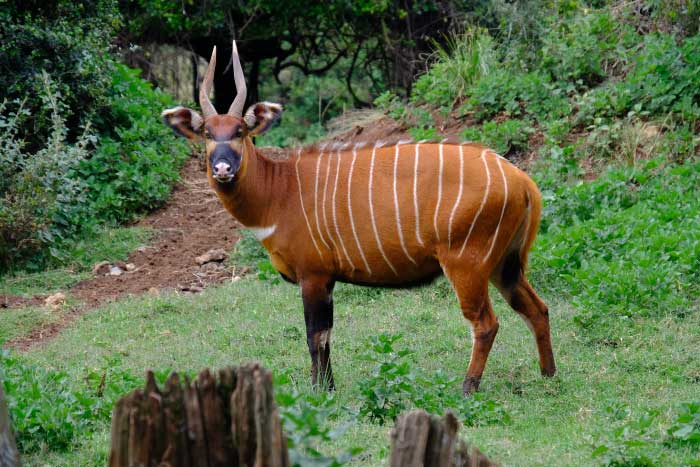
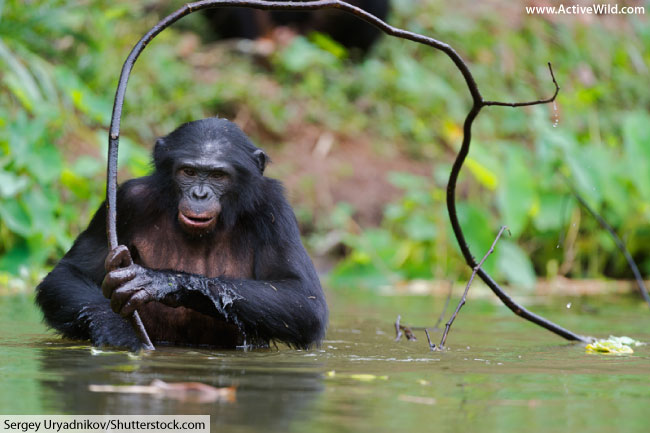

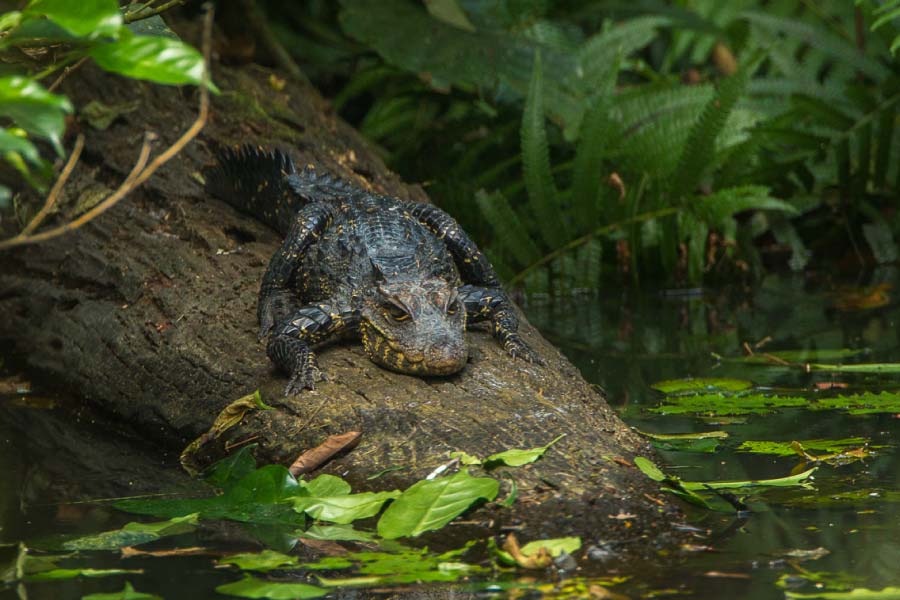
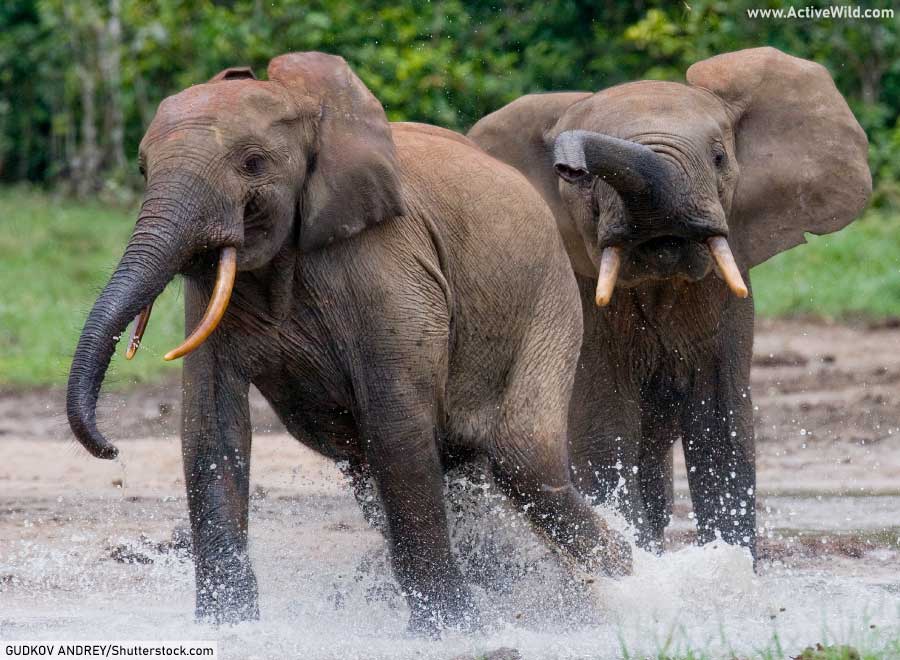
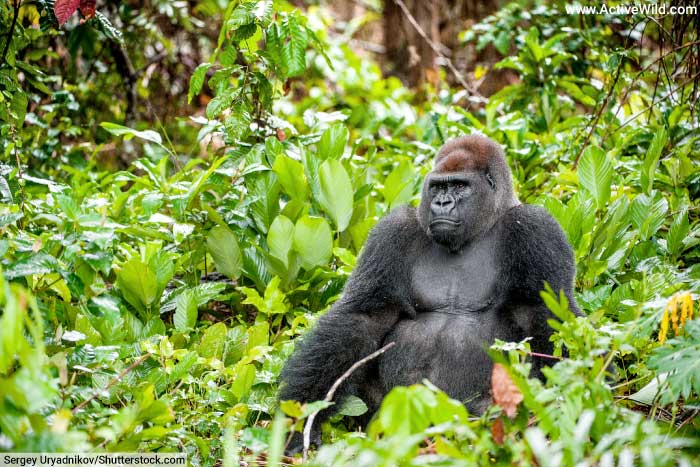

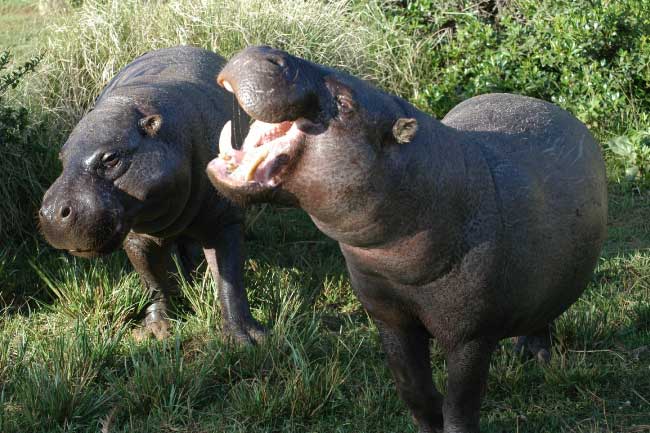
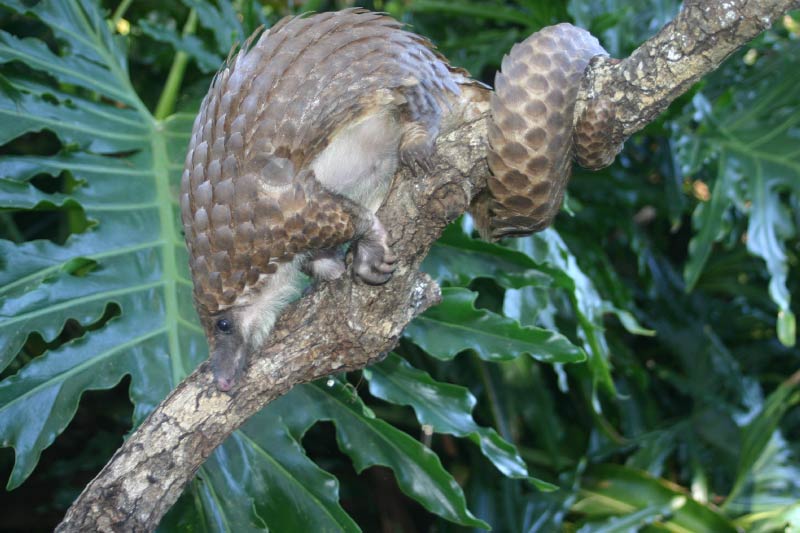
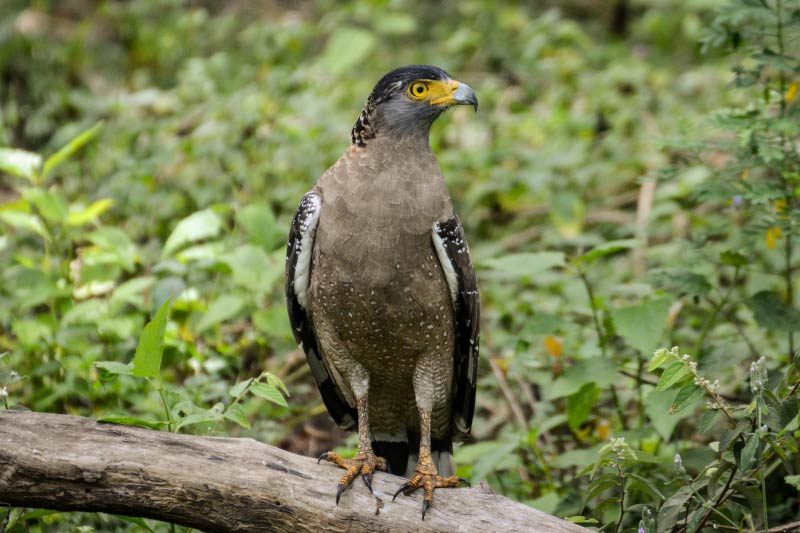
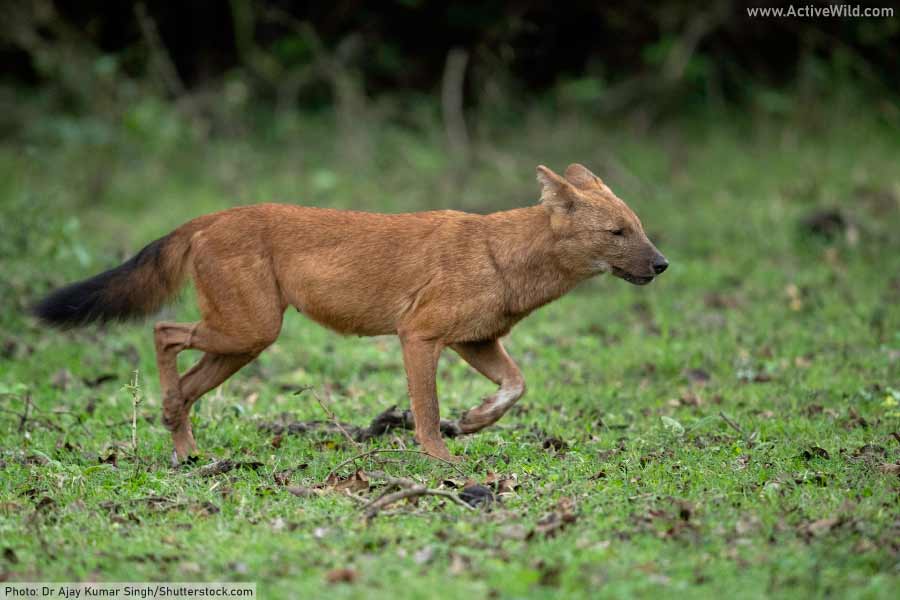
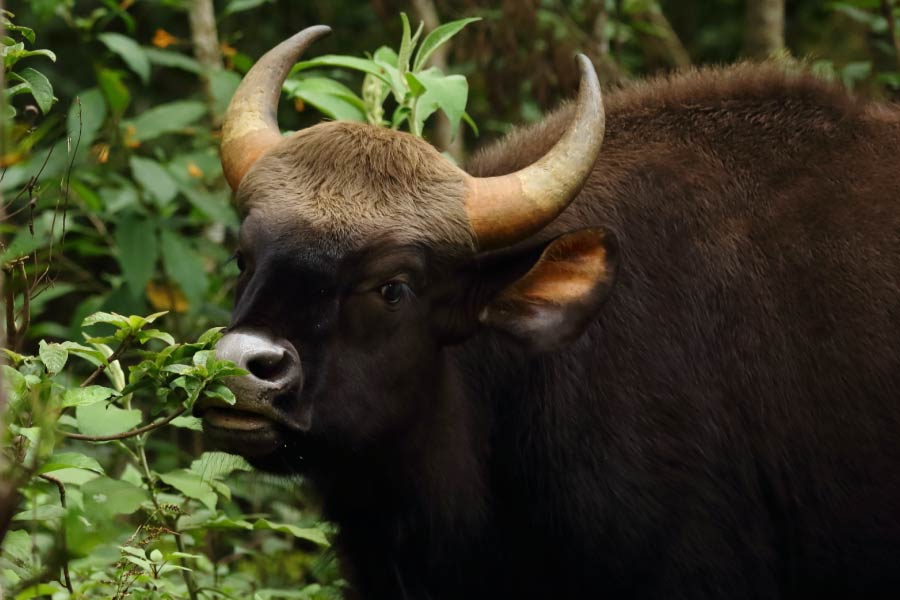
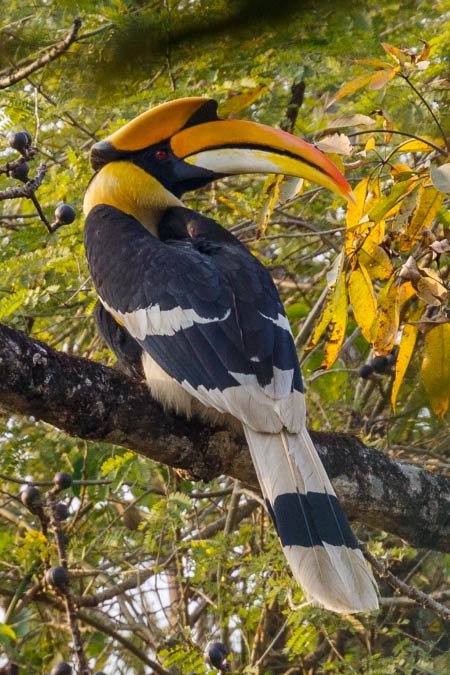
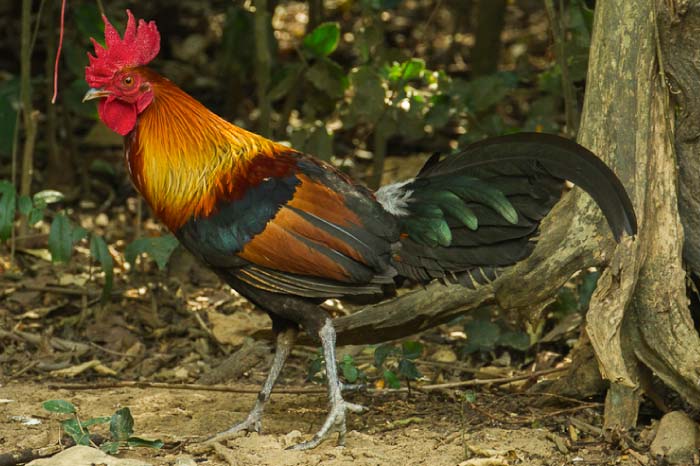

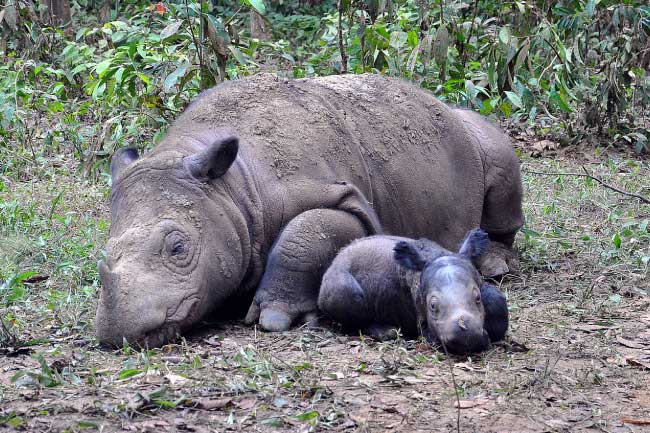
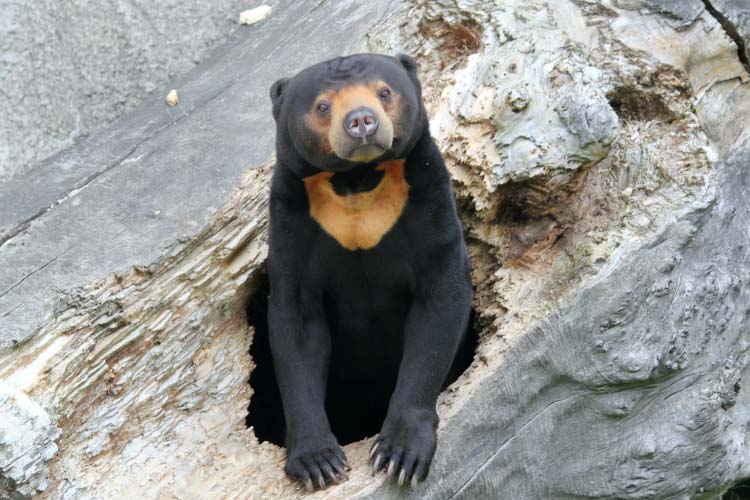
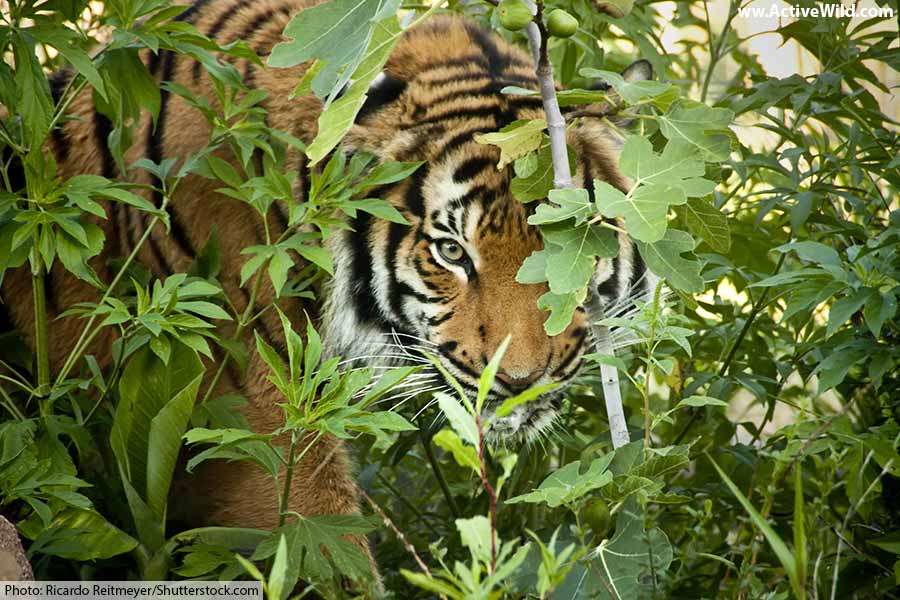
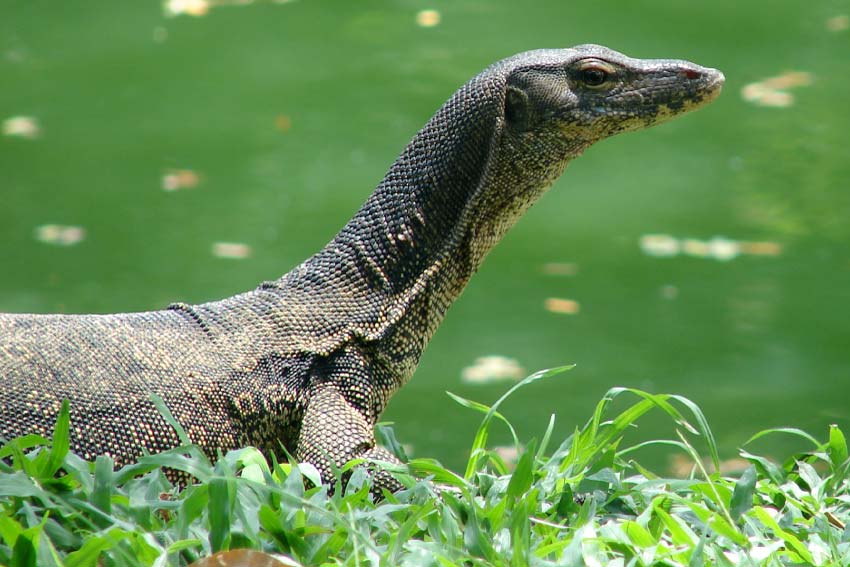
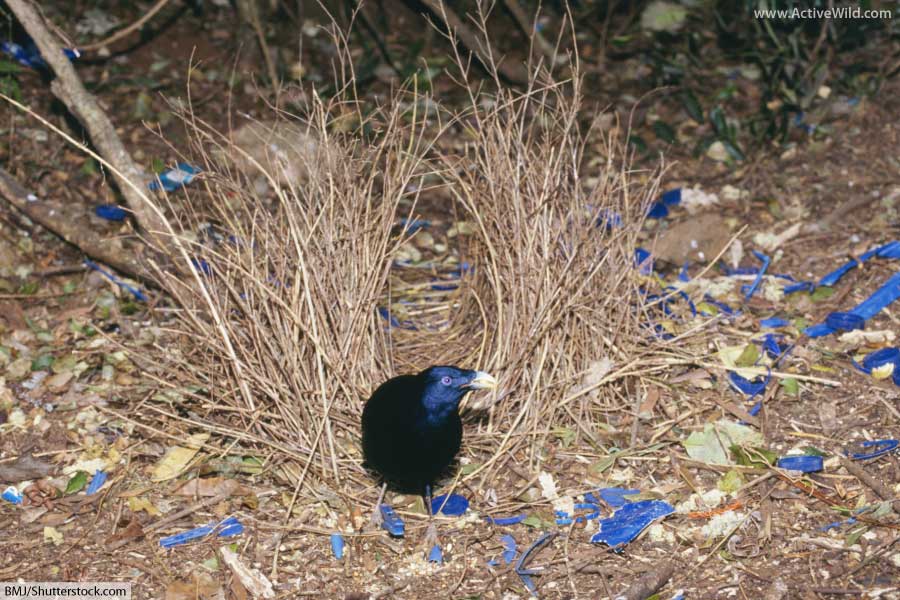
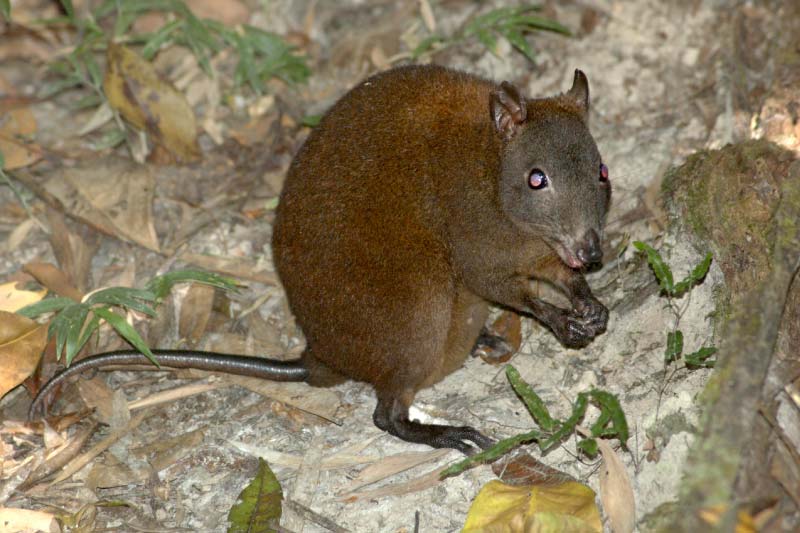
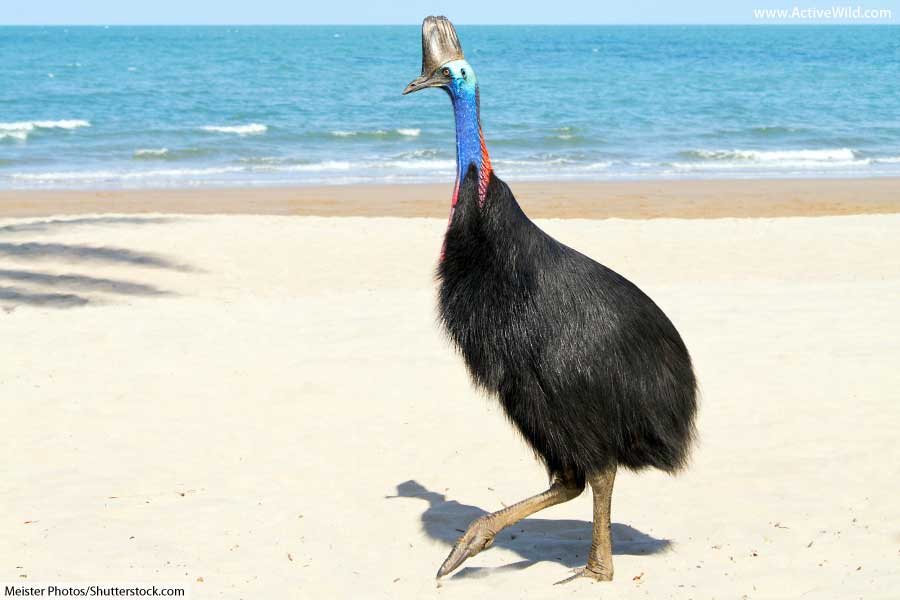
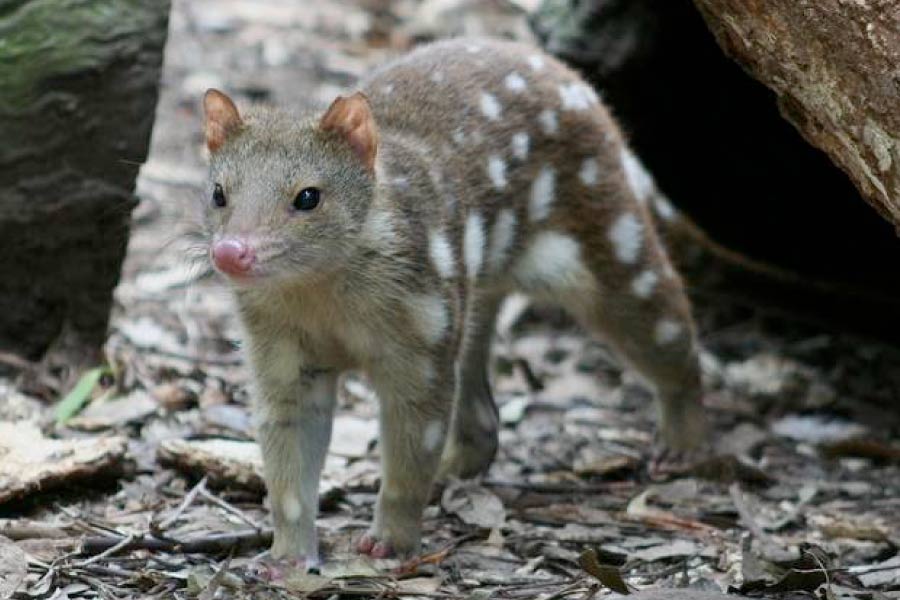
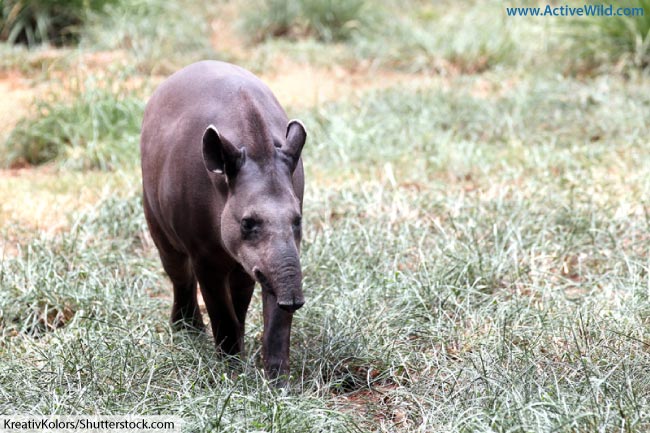

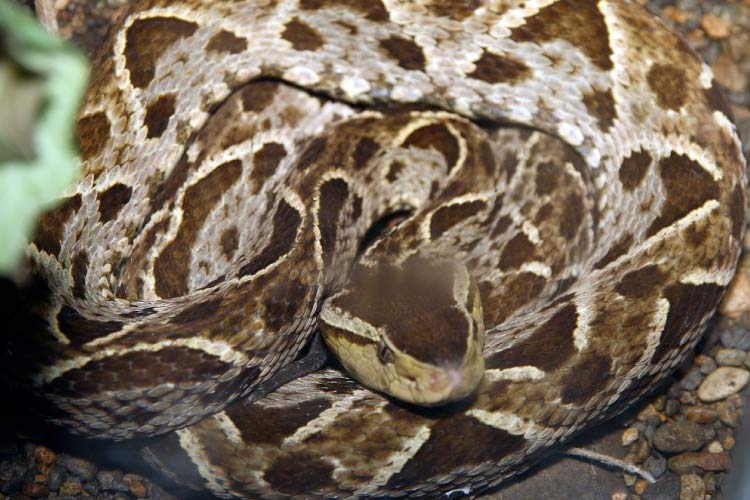

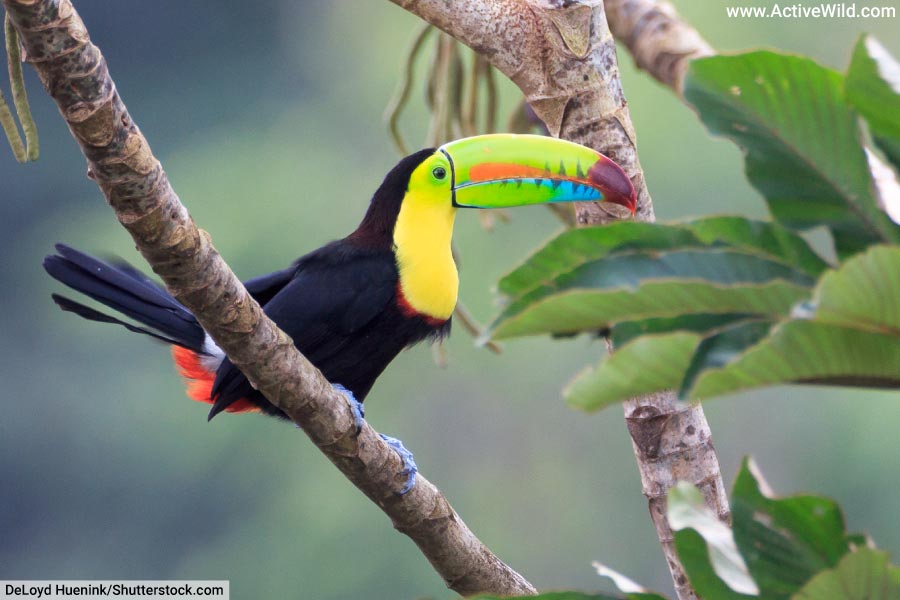
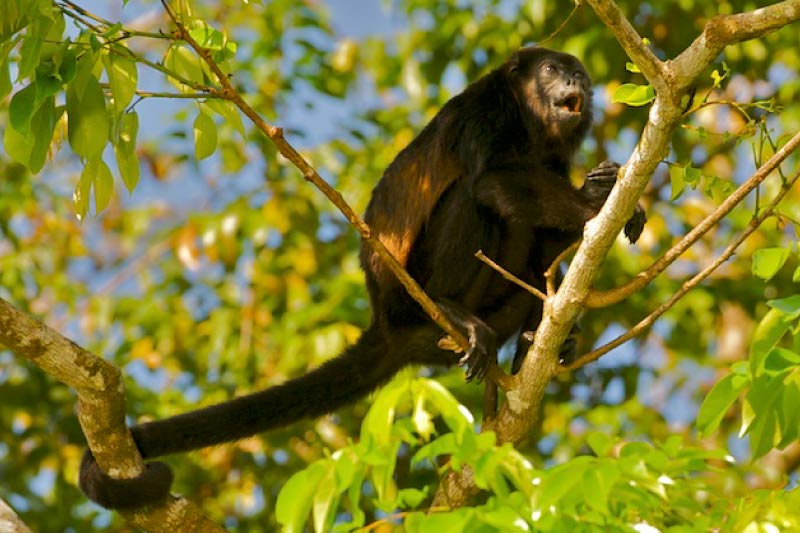
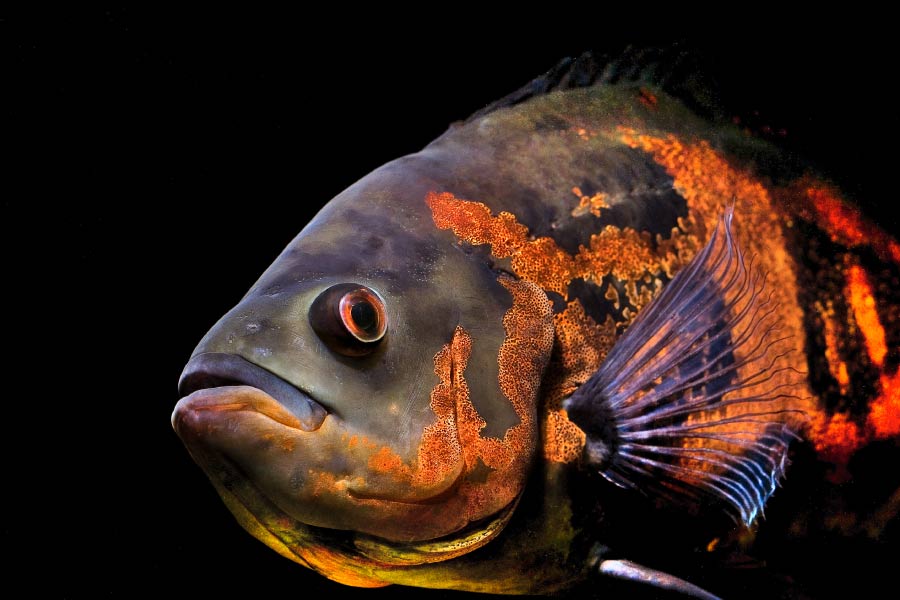
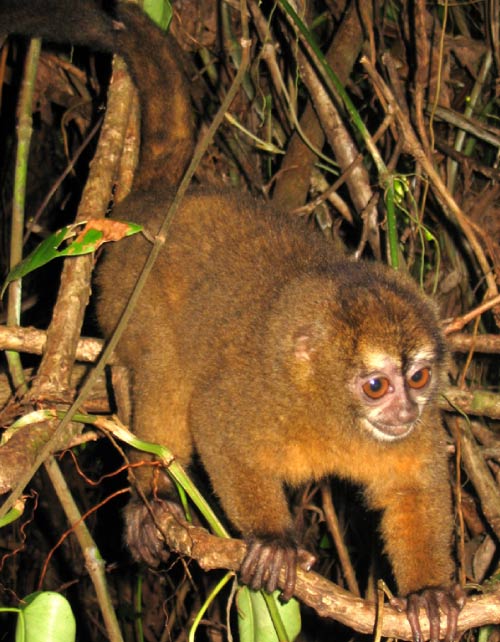
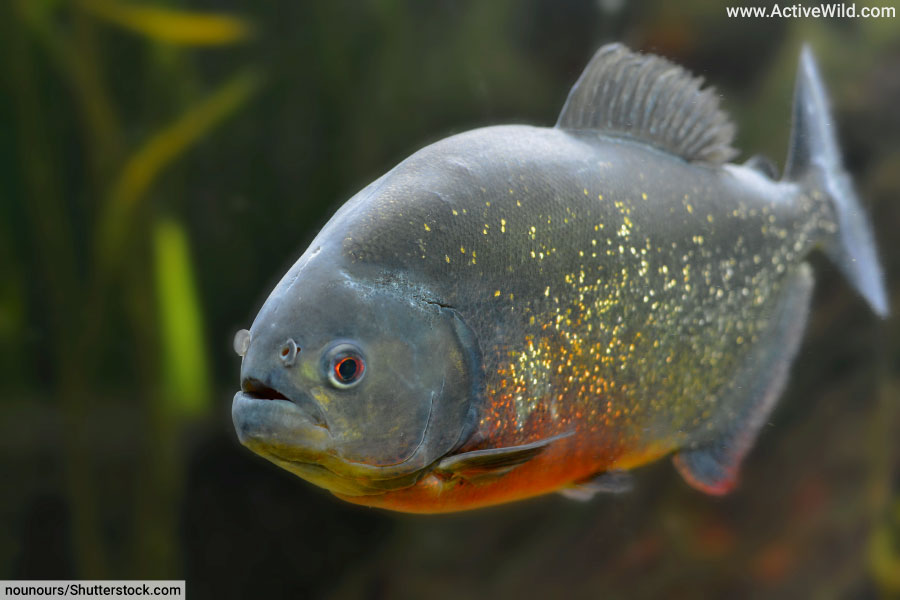
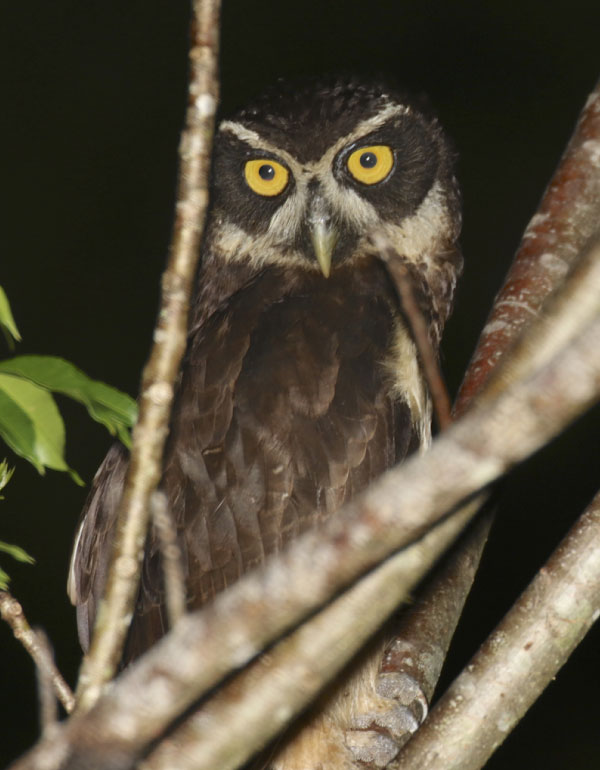

The tiger quoll look kinda cute it looks like a ferret
Awww… Im just gonna give it a little pet… 💀
😂
are the forest elephants playing or fighting?
my fave: the tiger 😻😻😻
Playing… we think!
Tigers = awesome! 🙂
Love the sun bear! 🙂 🙂
Good choice! 🙂